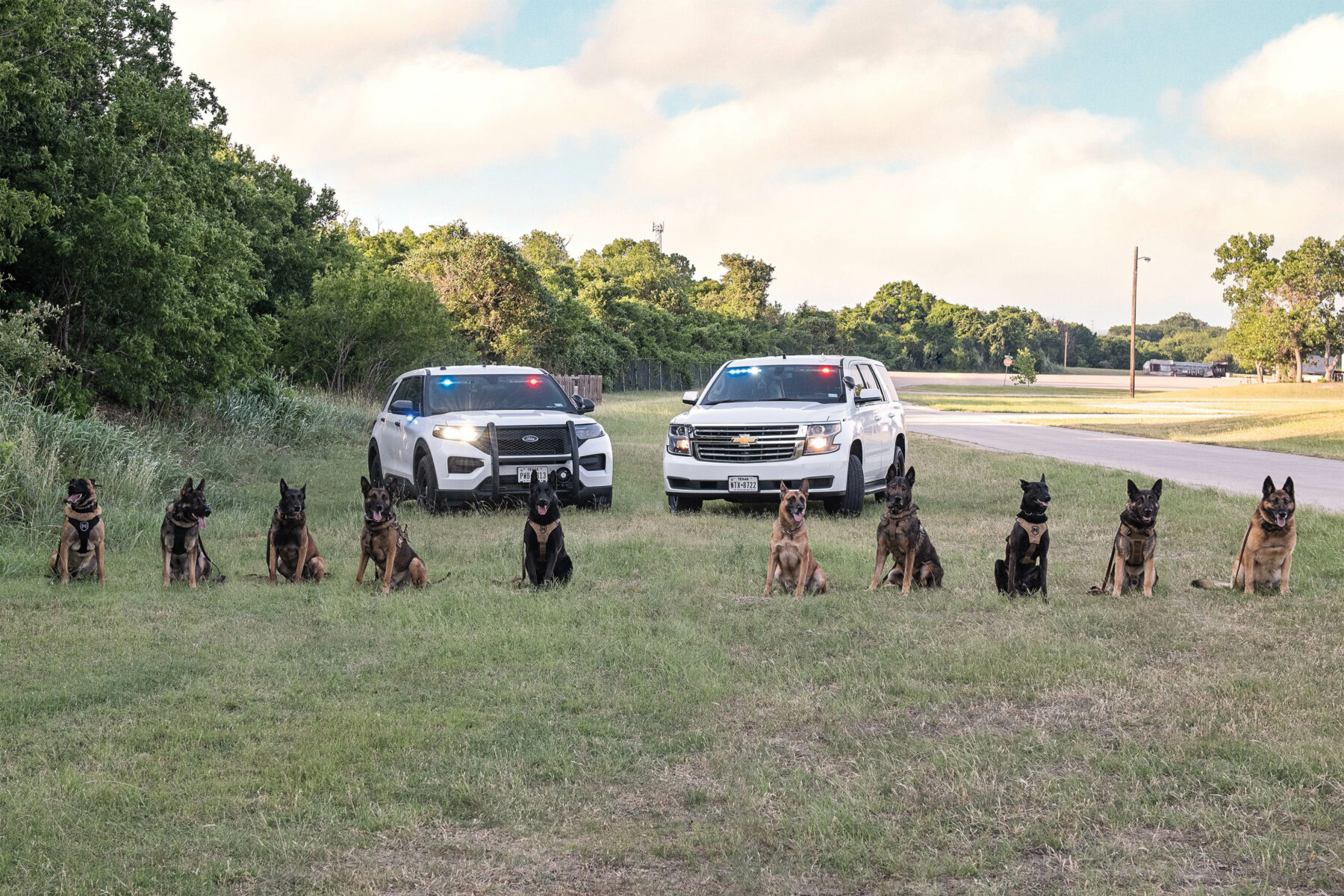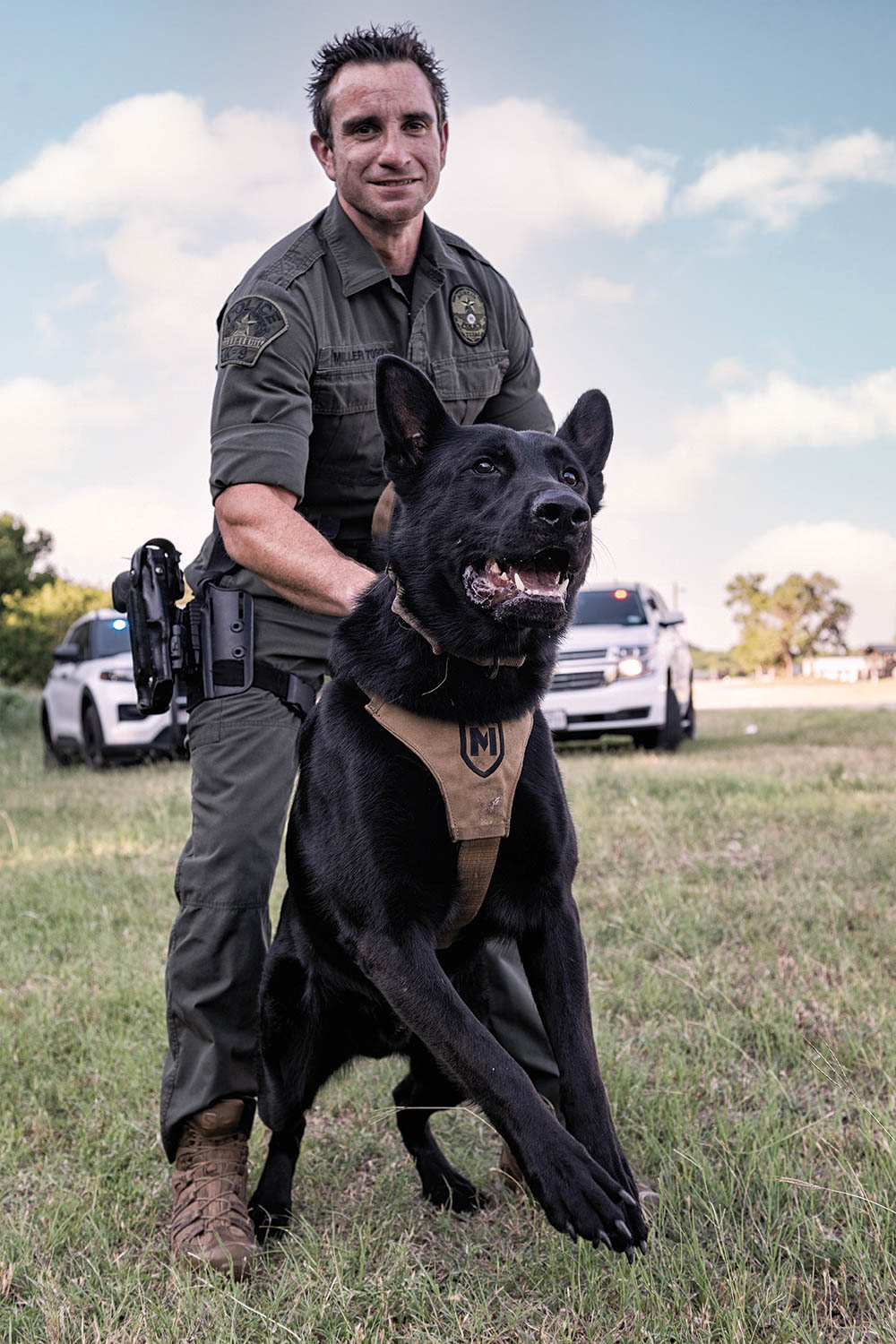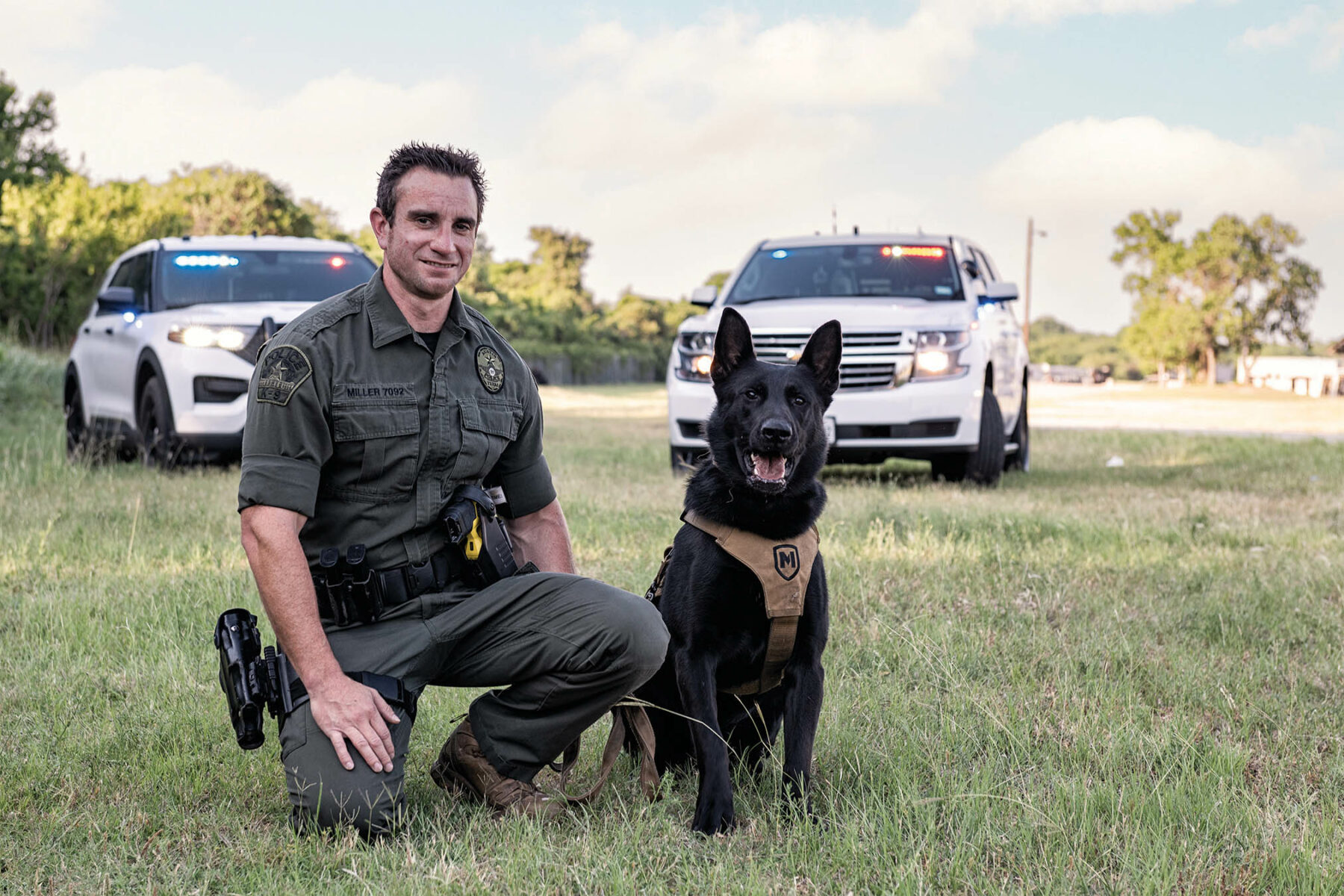A Look Into the Training of a K9 Unit

When TV shows or movies depict a K9 unit, they typically appear only in short stretches of time. But the life of a K9 unit is much more involved and intense than a 5-minute scene would suggest.
At the Austin Police Department, the K9 unit plays an important role in assisting and training for many different tasks to support the department. K9 units are composed of officers — known as “handlers” — and dogs working in tandem, whether it be for regular patrols, alongside other units or in the case of emergencies. Their selection and training process requires the dogs to be in top physical and mental shape.
German shepherd Lobo and his partner Officer Peter Miller have been with the department for two and 12 years, respectively, with a focus on search and apprehension.
Miller says when the department is selecting new dogs for the K9 unit, a handler will spend a week with a licensed breeder to determine which dogs would be the best fit. For APD, handlers use Pacesetter K9, a local company that breeds dogs built for police work. Typically, dogs in the K9 unit are German shepherds or Belgian Malinois, but they can be of any breed.

“We go for the dogs that best meet our criteria,” Miller says. “Our dog selection is very extensive.”
Though the dogs start out untrained, handlers still seek specific innate qualities through a variety of intense tests. These tests focus on the dog’s response toward various scenarios, including someone acting suspiciously or a hunting test where they must run long distances. Handlers test dogs’ inherent drives, such as fight and play, but they avoid defensive or aggressive behaviors in dogs.
“We don’t want dogs who are aggressive, but dogs who are confident,” Miller says. “We are looking for dogs who are willing to stand up to a bigger creature.”
Police departments also extensively check the dogs’ medical and physical background, and if there’s a potential for health issues, the dog isn’t chosen for the K9 unit.
But even once a dog is selected, the training doesn’t end there. Miller says they’re always training and that being a part of the K9 unit is a demanding job, for both the dog and the officer.
“I would equate this to a professional athlete,” Miller says. “(The dog’s) fitness is based (on) performance in order to utilize (it) in the real world every day.”
K9 training covers everything from simply throwing a ball to practicing search work in the Barton Creek Greenbelt to swimming in both local pools and in the Lake Travis area. These trainings are crucial as Miller says throwing a ball teaches them how to chase and swimming helps them become more familiar with water. Every few days, especially in the Texas summer, officers jog with their dogs, which helps the dog learn to regulate their temperature.

The dogs also occasionally train with other units such as SWAT or the U.S. Marshals Service, which helps the dog and officers become more comfortable with each other in intense situations within a controlled setting. Much of their training is for uncommon situations, which can include height exposure, wet exposure and helicopter operations.
Miller says the dogs’ endurance is the most important aspect of a K9 unit. Since Miller and Lobo specialize in search and apprehension operations, they both must be used to the heat as well as prolonged time out searching.
“As a dog pants, they start mouth-breathing a lot more and their nose-breathing becomes inefficient,” Miller says. “It depletes their search ability.”
But it isn’t just the dogs who constantly train; their handlers must constantly train as well since it’s a team dynamic between the officer and the dog. The two spend all of their time together, from the moment the dog is selected for the K9 unit to the moment the dog retires. They are with their handler 24/7. Miller says he couldn’t imagine himself doing anything else.
“I get paid to play with dogs and get to go find people, and it’s very rewarding,” Miller says. “The (dogs’) work drives are so high, and they absolutely love their job. To see these dogs grow and train, and to train alongside them, it’s just a neat experience.”






